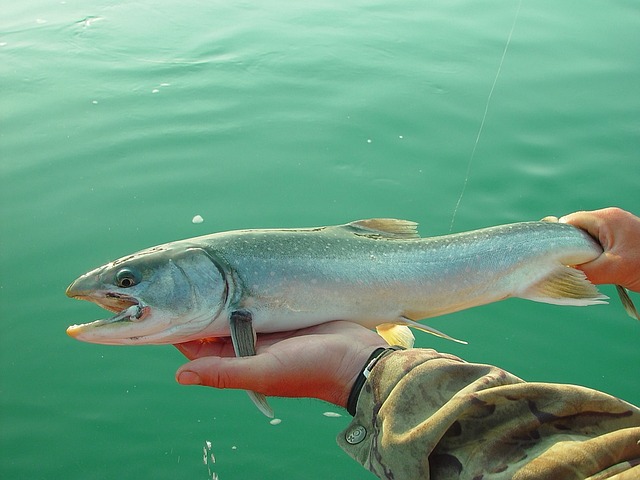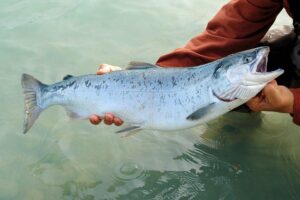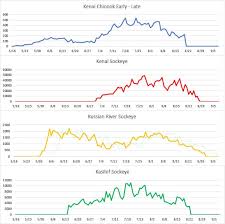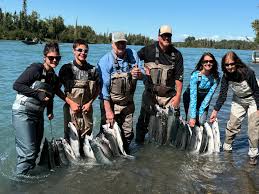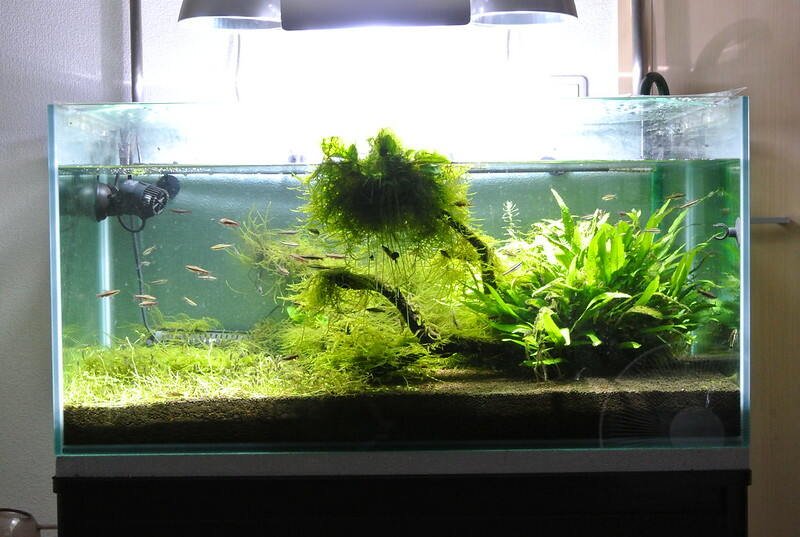The Kenai River in Alaska is one of the most famous fishing destinations in the world. Known for its salmon runs, rainbow trout, and stunning wilderness views, this river attracts both local anglers and travelers each year. One of the most valuable tools for fishing here is the Kenai River fish count.
It gives anglers real-time insight into salmon migration, helping them plan trips and improve catch success. In this guide, I’ll share details about the Kenai River fish count, its importance, how to use it, and fishing tips based on the data.
What Is the Kenai River Fish Count?
The Kenai River fish count is a daily record of fish movement in the river. This data is collected by the Alaska Department of Fish and Game (ADF&G) using sonar technology and other counting methods. It primarily tracks salmon species, such as:
- Sockeye salmon (red salmon)
- Chinook salmon (king salmon)
- Coho salmon (silver salmon)
- Pink salmon (humpy salmon, every other year)
This information is essential not just for anglers but also for conservation efforts. By tracking the number of fish entering the river, managers can set sustainable harvest limits and keep the salmon population healthy.
Why the Kenai River Fish Count Matters
The Kenai River is more than just a fishing spot; it’s a lifeline for local communities, tourism, and Alaskan wildlife. The fish count plays a major role in:
- Sustainable fishing – ensures enough salmon make it upstream to spawn.
- Better planning for anglers – knowing when salmon arrive boosts fishing success.
- Economic stability – supports local guides, lodges, and tourism businesses.
- Wildlife health – salmon are food for bears, eagles, and other species.
In short, the fish count helps balance recreational fishing, commercial harvest, and environmental needs.
How the Kenai River Fish Count Works
The process of counting fish is fascinating. ADF&G uses advanced sonar placed in the river, which creates images of moving fish. Biologists then analyze these counts daily.
Key points about the system:
- Location – Sonar sites are set up in both the lower and upper Kenai River.
- Daily updates – Fish counts are posted online, usually during peak salmon runs.
- Species tracking – Each type of salmon has separate records.
- Accuracy – While not perfect, sonar counts give reliable population trends.
This data allows anglers to predict the best fishing times and helps managers adjust regulations when needed.
Best Times to Fish the Kenai River
The Kenai River is open for fishing much of the year, but peak times depend on the salmon species. Thanks to the fish count, anglers can target specific runs.
General timeline of salmon runs:
- King salmon (Chinook): mid-May to early July.
- Sockeye salmon (Red): late June to early August.
- Coho salmon (Silver): August to October.
- Pink salmon (Humpy): late July to August (only on even-numbered years).
Other fish like rainbow trout and Dolly Varden are available year-round, especially after salmon runs when they feed on leftover eggs.
How Anglers Use the Fish Count
Many anglers check the Kenai River fish count daily during salmon season. Here’s how it helps:
- Trip planning – Choosing the right week for fishing.
- Daily fishing spots – Higher counts often mean more fish in accessible areas.
- Species targeting – Deciding whether to focus on sockeye, kings, or silvers.
- Adjusting gear – Using the right bait, tackle, and techniques depending on runs.
For example, if sockeye numbers spike in early July, anglers know to prepare fly setups for sockeye fishing at riverbanks.
Fishing Techniques for Kenai River
Once you know when the fish are running, the next step is choosing the right method.
Popular techniques include:
- Drift fishing – Letting bait or lures drift naturally with the current.
- Fly fishing – Perfect for sockeye and rainbow trout.
- Back-trolling – Often used for king salmon with plugs or spin-n-glo rigs.
- Casting spoons and spinners – Effective for silvers and pinks.
Tips for Successful Fishing on the Kenai River
Here are some practical tips every angler should remember:
- Check daily fish counts – Don’t just rely on past seasons; numbers change yearly.
- Follow regulations – The Kenai River has strict rules for conservation.
- Hire a guide if new – Local guides know the river best.
- Use strong tackle – Salmon here can be massive, especially kings.
Conservation and the Future of the Kenai
The Kenai River is famous for producing record-breaking king salmon. However, in recent years, the runs have declined due to overfishing, habitat loss, and environmental shifts. The Kenai River fish count plays a crucial role in protecting these populations for future generations.
Conservation measures include:
- Limiting harvest during weak runs.
- Encouraging catch-and-release for large kings.
- Protecting spawning grounds.
- Ongoing research by ADF&G.
Without these steps, the Kenai would lose its reputation as one of the world’s greatest salmon rivers.
Final Thoughts on the Kenai River Fish Count
If you’re planning a fishing trip to Alaska, the Kenai River fish count is your best friend. It not only helps you find the right time to fish but also supports sustainable practices that keep salmon populations thriving.
Whether you’re after a trophy king, a cooler full of sockeye, or the fight of a silver salmon, the Kenai has something to offer. By using the fish count data wisely and respecting the regulations, you’ll enjoy one of the most rewarding fishing experiences in the world.
